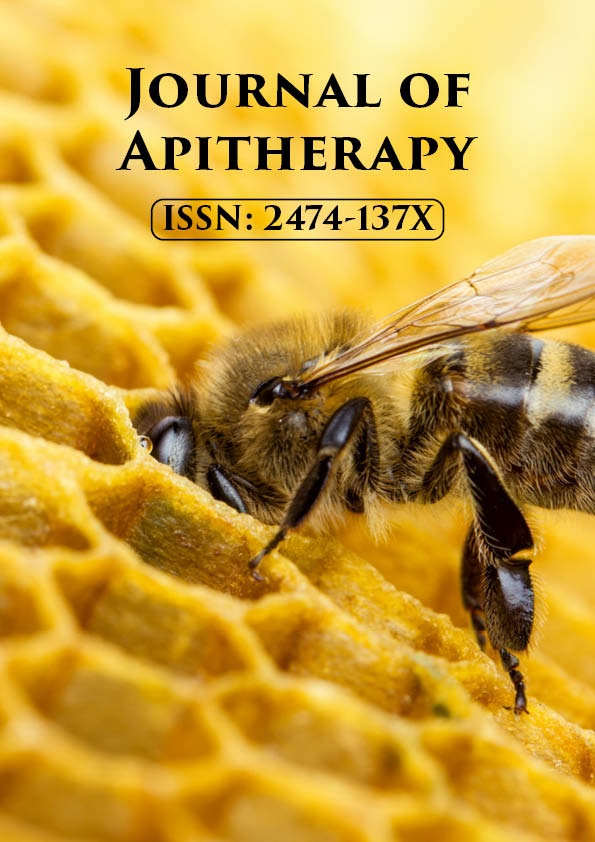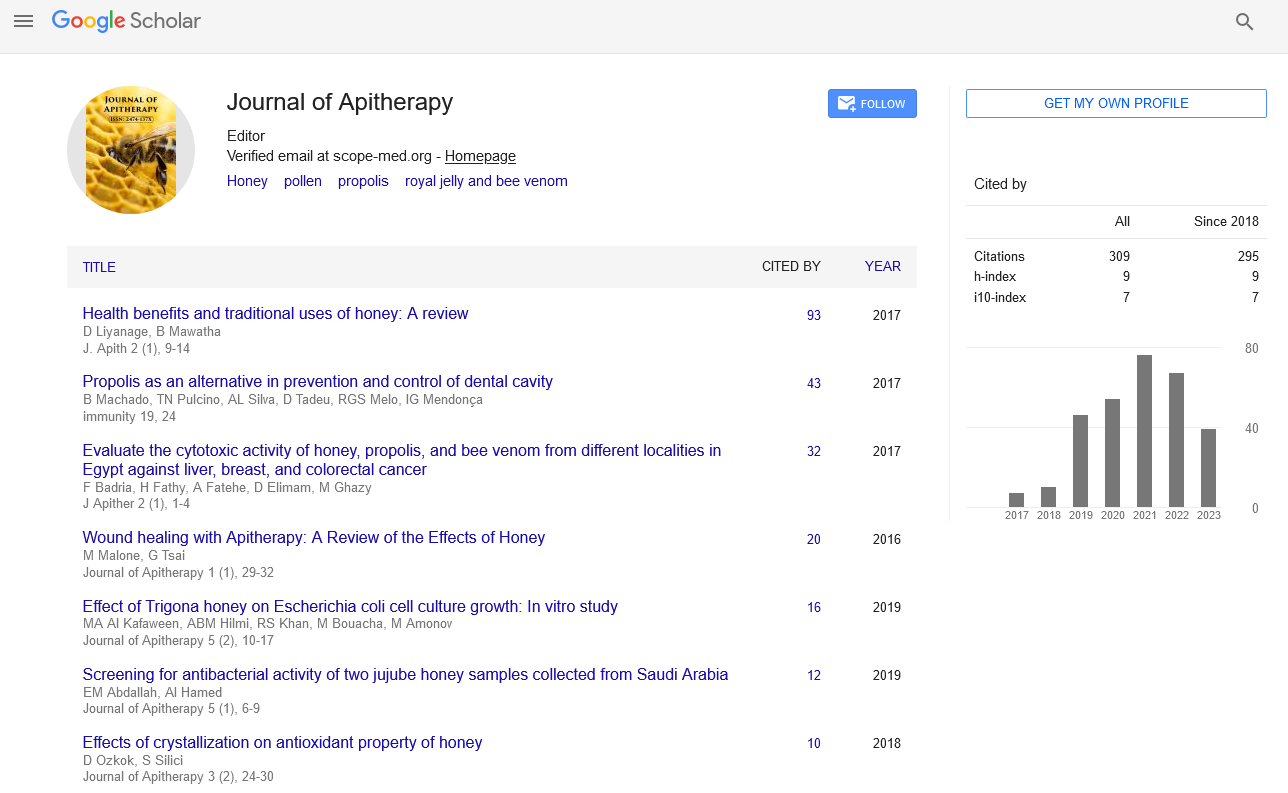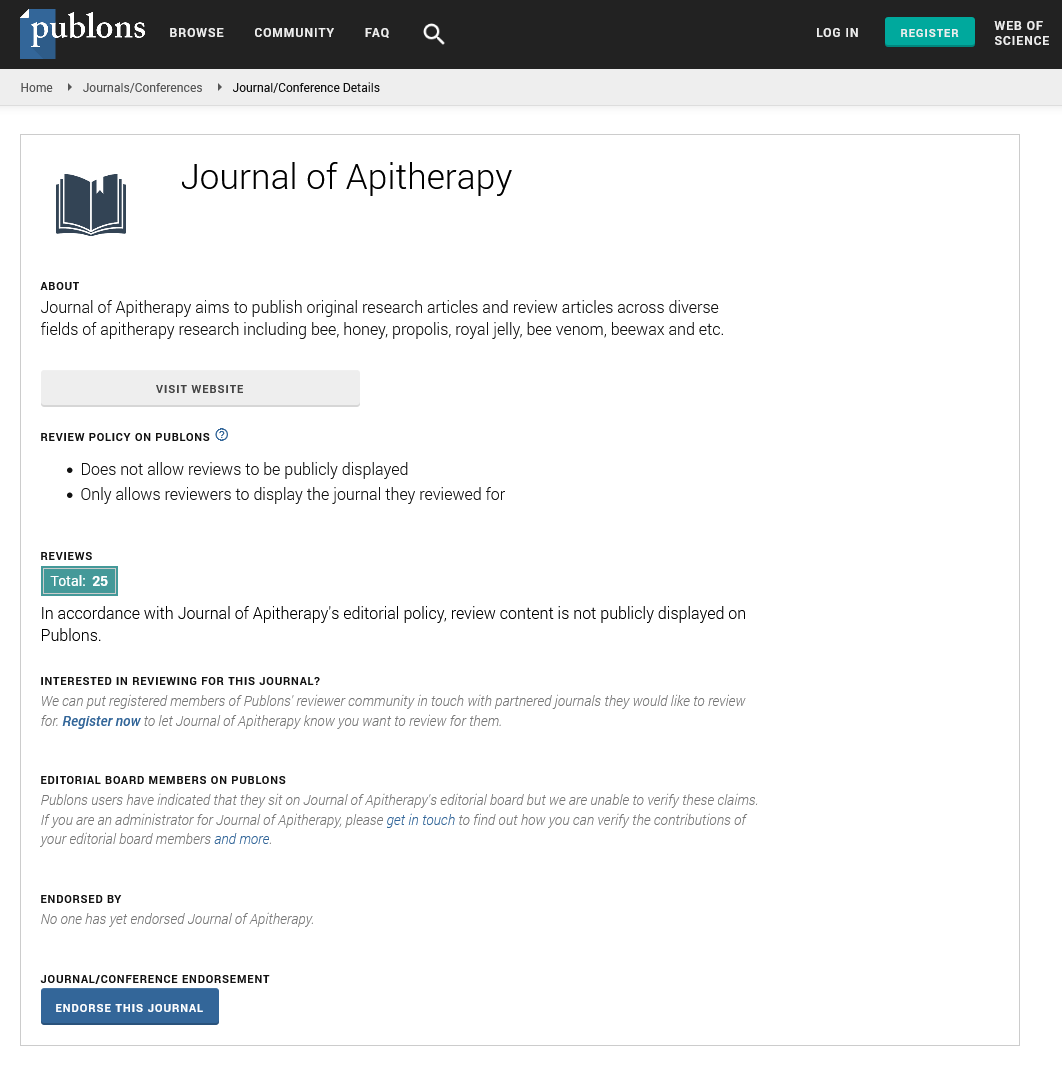Meaningfulness of apitherapeutic approaches using the example of primary dysmenorrhea
Abstract
Karsten Munstedt
Aim: To identify the various recommendations in various books on apitherapy and compare these to other methods from alternative and complementary medicine in order to determine whether apitherapy is the treatment of choice for patients with primary dysmenorrhea.Methods: Books were identified and analyzed and recommendations were summa-rized. Afterward, a literature search was performed regarding the evidence of bee products and dysmenorrhea. Then, the recommendations from alternative and com-plementary medicines were compared to the results of the first analysis.Results: In total, 27 out of 70 books on apitherapy recommended bee products for primary dysmenorrhea. In these 27 books, 15 different recommendations were found. However, only the recommendations of one author matched the current evidence which shows that royal jelly and honey are able to improve primary dysmenorrhea. Comparison to other methods from alternative and complementary medicine showed that evidence of some methods is much better than the evidence for apitherapy, meaning that apitherapy may not be considered the treatment of choice.Conclusion: Treatment recommendations of apitherapy are contradictory, incon-sistent, and mostly not evidence based. Apimondia, the International Federation of Beekeepers’ Associations, should promote scientifically sound information by involv-ing scientists on the board of the committee on apitherapy who do not promote unproven methods.
PDF






